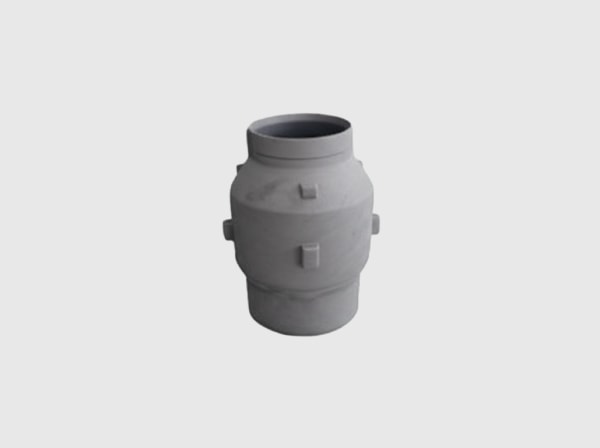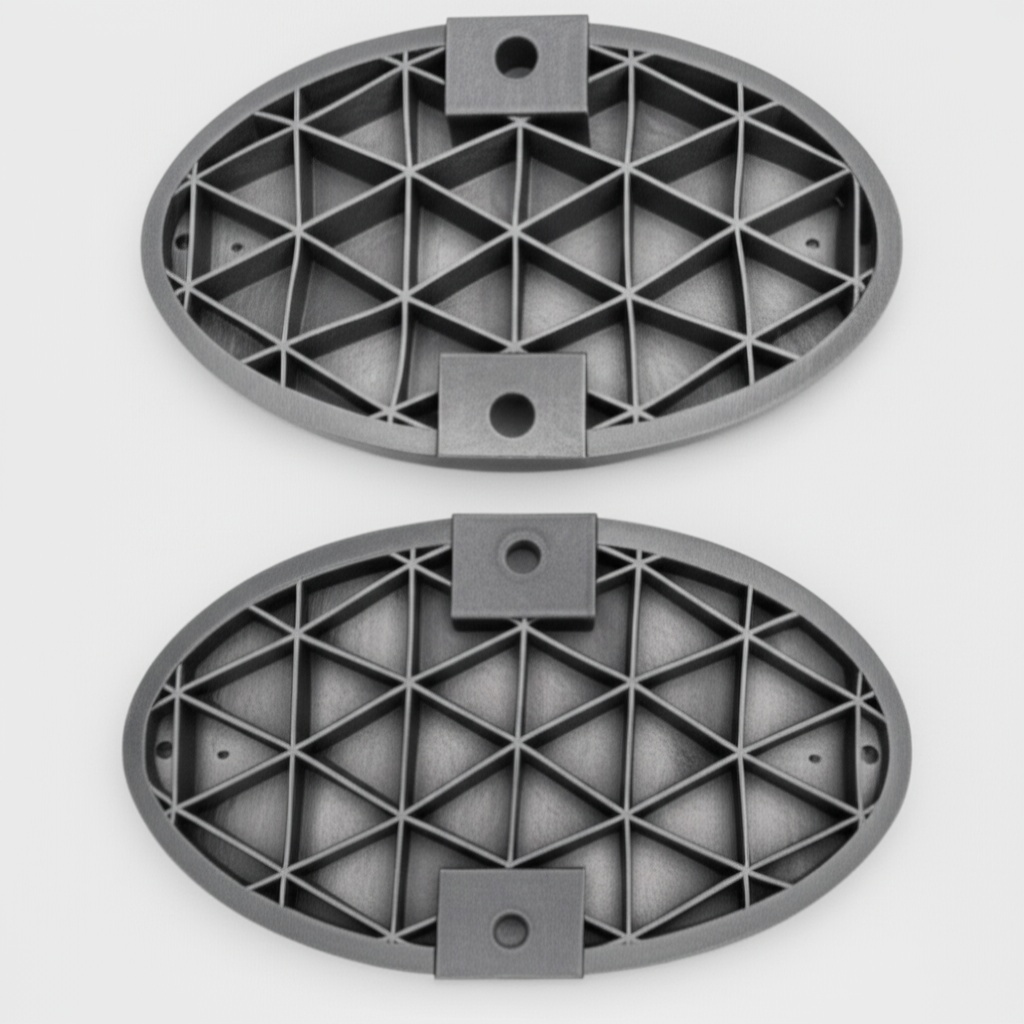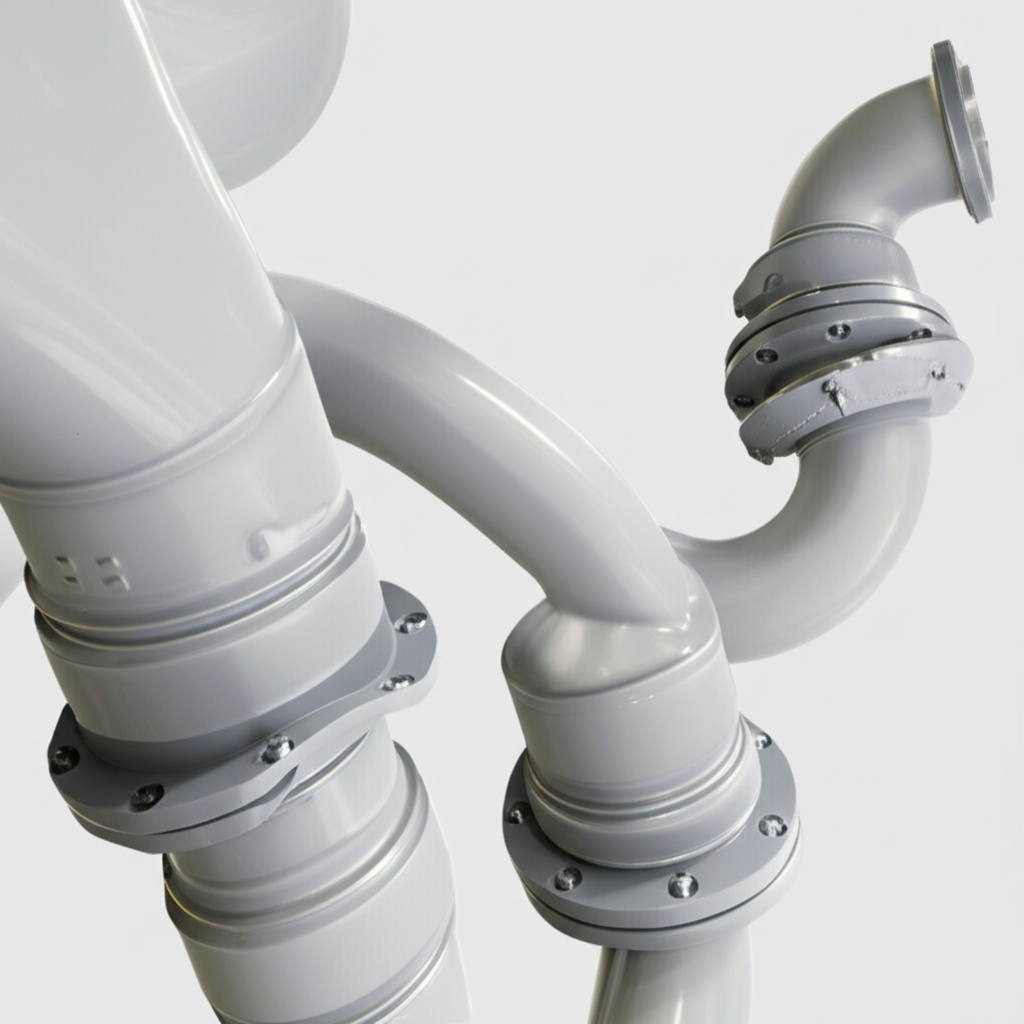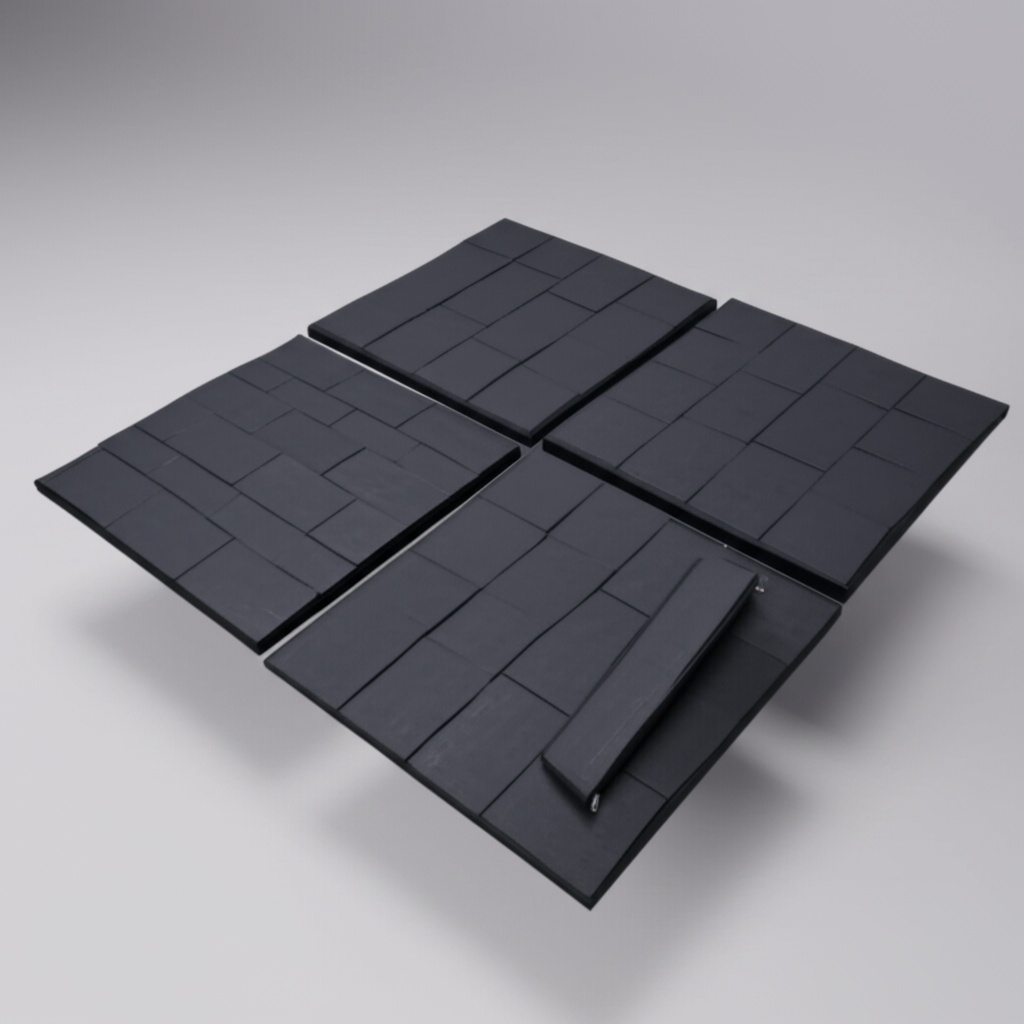Siliciumcarbide bidirectionele schakelmodules voor solid-state relais en AC matrixomvormers

Haalbare toleranties en maatnauwkeurigheid:
Productoverzicht en relevantie voor de markt in 2025
Siliciumcarbide (SiC) bidirectionele schakelmodules combineren twee hoogwaardige MOSFET's of JFET's in anti-serie (of een monolithische bidirectionele structuur) om in beide polariteiten te geleiden en te blokkeren, waardoor snelle schakeling met nuldoorgang voor AC-belastingen zonder mechanische contacten mogelijk is. In vergelijking met triacs/SCR's en mechanische relais leveren SiC bidirectionele schakelaars ultrasnel in- en uitschakelen, lage geleidingsverliezen, uitstekende thermische speelruimte en vrijwel stille werking—ideaal voor solid-state relais (SSR's), AC-matrixomvormers, soft starters, statische omschakelaars en slimme stroomonderbrekers.
In de industriële context van Pakistan voor 2025:
- Textielfabrieken (Faisalabad, Karachi) eisen precieze motorbesturing, lage uitvaltijd en weinig hoorbaar geluid in spin-/weefhallen.
- Cementfabrieken worden geconfronteerd met hoge omgevingstemperaturen en stof; slijtage van contactoren en vonken verhogen de onderhoudskosten en veiligheidsrisico's.
- Staal faciliteiten vereisen snelle, betrouwbare overdracht en schakeling voor zware inductieve belastingen, kranen en rollende hulpapparatuur.
- Datacenters en financiële machinekamers hebben statische omschakelaars en SSR's nodig met nul overdrachtstijd en minimale THD voor kritieke uptime.
SiC bidirectionele modules werken efficiënt bij hoge temperaturen (Tj tot 175°C, selecteer tot 200°C), tolereren frequent schakelen en verminderen de voetafdruk van het paneel—waardoor de OPEX wordt verlaagd en de betrouwbaarheid wordt verbeterd in zware Pakistaanse netwerkomstandigheden met frequente dips, pieken en flikkering.

Technische specificaties en geavanceerde functies
Representatieve specificaties (aanpasbaar per toepassing):
- Spanningklassen: 650 V, 1200 V, 1700 V
- Continue stroom: 25–400 A per module; schaalbaar met parallelle schakeling
- Topologieën: anti-serie MOSFET's (gemeenschappelijke source- of common-drain-opties), monolithische bidirectionele schakelaar op aanvraag
- Geleidingsprestaties: lage RDS(on) per poot (zo laag als 8–20 mΩ bij 25°C; gekarakteriseerd bij 125–150°C)
- Schakelen: tot 50–100 kHz (toepassingsafhankelijk), compatibel met soft-switching
- Gate-aandrijving: geïsoleerde drivers met Miller-klem, actieve gate-besturing en programmeerbare slew rate
- dv/dt/CMTI: >50–100 V/ns immuniteit; geoptimaliseerde lay-out om overshoot te minimaliseren
- Bescherming: DESAT/overstroombeveiliging, kortsluitingsweerstand (tSC), thermische uitschakeling via NTC-feedback
- Thermisch ontwerp: AlN/Si3N4 DBC, optionele SSiC/RBSiC warmtespreiders, lage RθJC
- Verpakking: laag-inductie-aansluitingen, schroef- of perspassing pinnen; conform coating of IP-geclassificeerde behuizingen voor stof
- Nalevingsdoelen: IEC 60947-4-3 (SSR's), IEC 62477-1 (omvormerbeveiliging), IEC 61000 (EMC), met praktijken die zijn afgestemd op PEC-richtlijnen en NTDC Grid Code-kwaliteitsverwachtingen
Geavanceerde functies van Sicarb Tech:
- Co-ontworpen gate-driverboards met ±15–20 V aandrijving, DESAT, soft turn-off en hoge CMTI digitale isolatie
- Geïntegreerde stroomdetectieopties voor matrixomvormercommutatiebesturing
- Klaar voor voetafdrukken voor RC-snubbers en MOV/TVS-overspanningsnetwerken
- Mechanische ontwerpen geoptimaliseerd voor compacte MCC-retrofits en verbeterde luchtstroom
Prestatievoordelen bij AC-schakeling en matrixconversie
| Betrouwbare AC-belastingsregeling en -overdracht onder de netwerkomstandigheden van Pakistan | SiC bidirectionele schakelmodule | Op triac/SCR gebaseerde oplossingen | Elektromechanische relais/contactoren |
|---|---|---|---|
| Bidirectionele blokkering/geleiding | Native (beide polariteiten) | Ja (SCR-paren/triacs) | Mechanische contacten |
| Schakelsnelheid en nuldoorgangsregeling | Zeer snel; precies | Gematigd; beperkte dv/dt | Langzaam; stuiteren en vonken |
| Geleidingsverlies bij hoge stroom | Lage RDS(on), temp-stabiel | Hogere spanning in de aan-toestand | Contactweerstand neemt toe met slijtage |
| Prestaties bij hoge omgevingstemperatuur (40–45°C) | Sterk; Tj 175–200°C | Derating nodig | Spoelverwarming; contact derating |
| Levensduur en onderhoud | Lang; geen slijtdelen | Langer dan relais; thermische belasting | Contactslijtage, vonken, frequente service |
| Impact van EMI en THD | Regelbare dv/dt, weinig ruis | Hogere herstel-/commutatieruis | Contactgeklapper, transiënte pieken |
Belangrijkste voordelen en bewezen voordelen
- Hoge efficiëntie en weinig warmte: Lage RDS(on) en gecontroleerd schakelen verminderen de dissipatie, waardoor koellichamen en HVAC-belastingen kleiner worden.
- Ultrasnel, geruisloos schakelen: Ideaal voor SSR's en statische overdracht in datacenters en kritieke productielijnen.
- Robuust in ruwe omgevingen: Stabiele prestaties bij hoge omgevingstemperaturen met stofbestendige opties.
- Precisiebesturing: Ondersteunt matrixomvormercommutatie met hoge dv/dt-immuniteit en geïntegreerde detectie.
- Minder uitvaltijd en OPEX: Geen contactslijtage; langere onderhoudsintervallen in vergelijking met contactoren/relais.
Expertcitaat:
“Op SiC gebaseerde bidirectionele schakelaars maken precieze AC-besturing met lage verliezen mogelijk zonder mechanische slijtage—cruciaal voor betrouwbaarheid in industriële omgevingen met hoge temperaturen en veel stof.” — IEEE Power Electronics Magazine, Industrial Power Conversion Outlook, 2024 (industrieanalyse)
Praktijktoepassingen en meetbare succesverhalen
- Statische omschakelaar (STS) in de financiële machinekamer van Karachi:
- SiC bidirectionele SSR bereikte overdracht binnen een halve cyclus zonder mechanische onderdelen.
- Resultaat: Geen hoorbaar geluid, 98,5% front-end efficiëntie, verminderde THD-impact; verbeterde uptime-statistieken.
- Textielweefgetouwen, Faisalabad:
- Contactorgebaseerde soft starters vervangen door SiC SSR-modules en gecontroleerde dv/dt.
- Resultaten: 22% reductie in de temperatuur van de aandrijfkast, 30% minder ongewenste trips tijdens spanningsdips, 5% energiebesparing via lagere thermische verliezen.
- Cementfabriek ventilatorbesturing, Punjab:
- SiC matrixomvormer front-end maakte compacte, transformatorloze motorbesturing mogelijk.
- Resultaten: 28–32% reductie in de voetafdruk van de kast; onderhoudsinterval verlengd met één cyclus dankzij het elimineren van contactslijtage; PF verbeterd tot ~0,98 met gecoördineerde PFC.
【Afbeelding prompt: gedetailleerde technische beschrijving】 Toepassingscollage: 1) Statische omschakelaarrek met SiC bidirectionele modules en oscilloscoopspoor dat snelle overdracht laat zien; 2) Textielweefgetouw-bedieningspaneel achteraf uitgerust met SiC SSR's, thermische camera-overlay die koelere hotspots laat zien; 3) Cementfabriek MCC-opstelling die de compacte SiC-matrixomvormer benadrukt; inclusief annotaties voor PF, THD en reductie van de voetafdruk van de kast; fotorealistisch, 4K.
Overwegingen voor selectie en onderhoud
- Elektrische selectie:
- Kies spannings-/stroomwaarden met 20–30% marge voor netwerkdips/pieken en motorinschakeling.
- Valideer kortsluitbeveiliging en veilige werkzone (SOA) voor inductieve belastingen.
- Gate-aandrijving en besturing:
- Gebruik geïsoleerde drivers met DESAT en soft turn-off; stem de gate-weerstand af voor acceptabele dv/dt ten opzichte van motorisolatie.
- Implementeer voor matrixomvormers commutatiestrategieën met dode tijd en stroomrichtingsdetectie.
- Thermisch en behuizing:
- Model koellichaamprestaties bij 45°C omgevingstemperatuur; zorg voor voldoende luchtstroom of vloeistofgekoelde opties voor modules met hoge stroomsterkte.
- Gebruik in stoffige locaties (cement/textiel) positieve-druk- of afgesloten behuizingen; overweeg conform gecoate assemblages.
- EMC en stroomkwaliteit:
- Plaats RC-snubbers dicht bij de aansluitingen; zorg voor een goede aarding volgens IEC 61000-6-4 en PEC-praktijken.
- Coördineer de upstream-beveiliging (MCB's/relais) met de modulebeveiliging om ongewenste trips te voorkomen.
- Onderhoud:
- Periodieke koppelcontroles op aansluitingen; bewaak de NTC-temperatuur en de geregistreerde schakelcycli.
- Firmware-updates voor diagnostische drempels waar intelligente drivers worden gebruikt.
Succesfactoren in de industrie en getuigenissen van klanten
- Succesfactoren:
- Nauwkeurige belastingsprofilering (inschakeling, duty cycle), harmonische studie en beoordeling van de transformatorcapaciteit
- Pilot-installatie tijdens de piekzomer voor validatie van de slechtste gevallen
- Onderhoudsteams trainen in solid-state schakeldiagnostiek
- Integratie met faciliteitenbewaking voor voorspellend onderhoud
- Getuigenis (Plant Electrical Manager, Lahore datafaciliteit):
- “Onze op SiC gebaseerde STS elimineerde overdrachtsglitches en het geluid van mechanische schakelaars. We zagen onmiddellijke thermische en betrouwbaarheidsverbeteringen.”
Toekomstige innovaties en markttrends
- Vooruitzichten 2025–2027:
- Monolithische bidirectionele SiC-schakelaars met verminderde parasieten en hogere stroomdichtheid
- Slimme SSR's met ingebouwde detectie, conditiebewaking en digitale twins
- Kostenoptimalisatie via 200 mm SiC-wafers en gelokaliseerde assemblagepartnerschappen in Zuid-Azië
- Verbeterde coatings voor fabrieken met veel deeltjes en gestandaardiseerde plug-in modules voor MCC-retrofits
Autoriteitsperspectief:
“Naarmate SiC-apparaten opschalen en detectie integreren, zal AC solid-state schakelen contactoren in veel bedrijfskritische toepassingen vervangen.” — IEA Technology Perspectives, Power Electronics chapter, 2024 (marktcommentaar)
Veelgestelde vragen en antwoorden van experts
- Zullen hoge dv/dt motorwikkelingen belasten?
- We stemmen dv/dt af via gate-weerstand en gebruiken indien nodig uitgangsfilters. Voor oudere motoren behouden sinus- of dV/dt-filters veilige isolatiebelasting.
- Kunnen SiC SSR's contactoren vervangen voor zware inductieve belastingen?
- Ja, met de juiste bescherming en thermisch ontwerp. Voordelen zijn onder meer snellere activering, geen vonken en minder onderhoud.
- Zijn deze modules compatibel met 220/400 V, 50 Hz-systemen en lokale beveiligingen?
- Volledig compatibel; ontwerpen sluiten aan bij PEC-praktijken en NTDC Grid Code-verwachtingen. We stemmen de coördinatie af op site MCB's/relais.
- Welke ROI kan er worden verwacht?
- Typische ROI varieert van 18–30 maanden, gedreven door energiebesparing, minder onderhoud en verbeterde uptime—sneller voor 24/7-operaties.
- Hoe gaat u om met stoffige, hete omgevingen?
- IP-geclassificeerde behuizingen, conforme coating, positieve-drukpanelen en gevalideerde thermische paden behouden de prestaties bij een omgevingstemperatuur van 40–45°C.
Waarom deze oplossing werkt voor uw activiteiten
SiC bidirectionele schakelmodules leveren snelle, efficiënte en betrouwbare AC-regeling zonder mechanische slijtage—ideaal voor de hete, stoffige en grid-variabele industriële locaties van Pakistan. Ze verbeteren de uptime, verminderen de energie- en koellast en sluiten aan bij de evoluerende compliance-eisen, van textiellijnen tot cement- en staalhulpmiddelen, en missiekritieke data-infrastructuur.
Neem contact op met specialisten voor oplossingen op maat
Werk samen met Sicarb Tech om uw solid-state switching roadmap te versnellen:
- 10+ jaar expertise in SiC-productie met steun van de Chinese Academie van Wetenschappen
- Ontwikkeling van aangepaste producten voor R-SiC, SSiC, RBSiC en SiSiC, plus geavanceerde moduleverpakking
- Technologieoverdracht en fabrieksoprichtingsdiensten—van haalbaarheid tot inbedrijfstelling van de productielijn
- Kant-en-klare levering van materiaalverwerking tot afgewerkte modules, met applicatie-engineering en compliance-ondersteuning
- Bewezen staat van dienst met 19+ ondernemingen in veeleisende omgevingen; snelle prototyping en pilot-implementatie
Boek een gratis consult voor een locatiespecifieke schakelstudie, THD/PF-beoordeling en ROI-model.
- Email: [email protected]
- Telefoon/WhatsApp: +86 133 6536 0038
Reserveer nu pilot-slots voor Q4 2025 om levertijden en engineeringbeschikbaarheid vast te leggen.
Artikelmetadata
- Laatst bijgewerkt: 2025-09-11
- Volgende geplande beoordeling: 2025-12-15
- Auteur: Sicarb Tech Application Engineering Team
- Contact: [email protected] | +86 133 6536 0038
- Standaarden focus: IEC 60947-4-3, IEC 62477-1, IEC 61000; afgestemd op PEC-praktijken en NTDC Grid Code-kwaliteitscriteria

About the Author: Sicarb Tech
We provide clear and reliable insights into silicon carbide materials, component manufacturing, application technologies, and global market trends. Our content reflects industry expertise, practical experience, and a commitment to helping readers understand the evolving SiC landscape.




